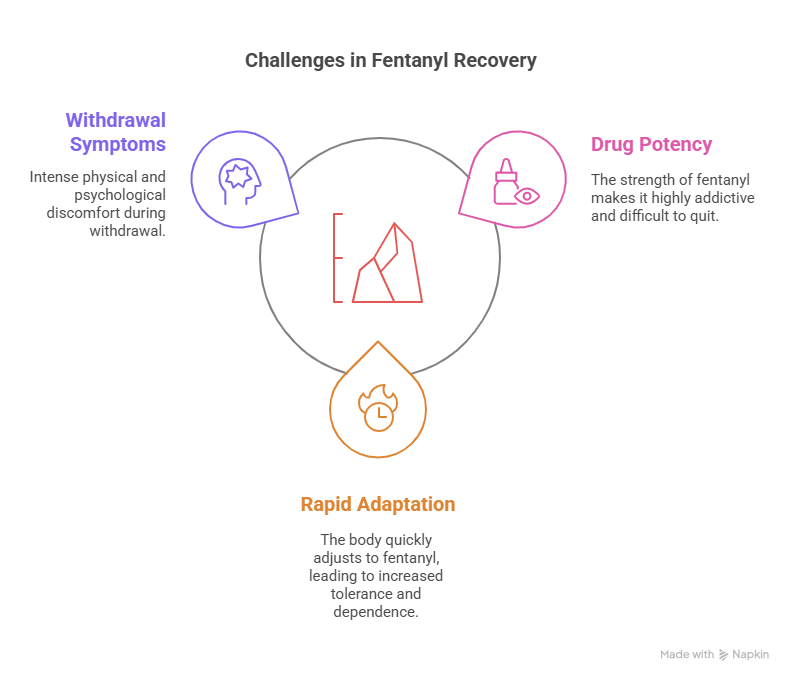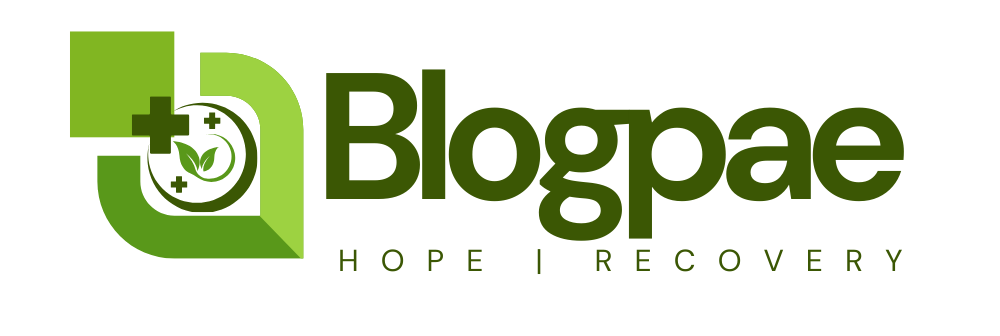For individuals struggling with fentanyl addiction, the journey towards recovery begins with a critical admission: acknowledging powerlessness over the substance.
This fundamental step, as outlined in Narcotics Anonymous (NA), is the cornerstone of the recovery process. By accepting the inability to control fentanyl use, individuals can start to break free from its grip.
Admitting powerlessness is not a sign of weakness but a courageous acknowledgment of the need for help. It’s the first step towards healing and rebuilding a life.
Key Takeaways
- Admitting powerlessness is the first step in NA’s recovery program.
- Acknowledging fentanyl addiction is crucial for seeking help.
- This admission is a sign of courage, not weakness.
- It’s the foundation upon which the recovery journey is built.
- NA provides a supportive framework for overcoming addiction.
The Devastating Impact of Fentanyl Addiction
Understanding the devastating impact of fentanyl addiction is crucial for developing strategies to combat the opioid epidemic. Fentanyl addiction is a complex issue that affects not only the individual but also their loved ones and the community at large. The potency of fentanyl, a synthetic opioid, makes it particularly dangerous, leading to a significant increase in overdose deaths.
Fentanyl’s impact is multifaceted, causing physical, emotional, and social harm. It’s essential to address the root causes of addiction and provide comprehensive support for recovery.
Why Fentanyl Is Different from Other Opioids
Fentanyl is significantly more potent than other opioids, making it highly addictive and dangerous. Its potency increases the risk of overdose, even with small amounts. This characteristic underscores the need for specialized treatment approaches in fentanyl addiction treatment.
The Cycle of Addiction and Failed Control
The cycle of fentanyl addiction is marked by intense cravings and a loss of control, leading to a vicious cycle of abuse. Individuals struggling with fentanyl addiction often experience severe withdrawal symptoms, making recovery challenging. Effective recovery from fentanyl abuse requires a comprehensive approach that addresses both physical and psychological aspects of addiction.
Understanding Step 1 Fentanyl Recovery in NA
The path to recovery in NA starts with Step1, which involves acknowledging the inability to control fentanyl use. This initial step is crucial for individuals struggling with fentanyl addiction, as it sets the stage for the fentanyl detox process and subsequent recovery steps.
The Exact Wording and Meaning of Step1
Step1 in NA is worded as: “We admitted we were powerless over our addiction, and that our lives had become unmanageable.” This statement is a powerful acknowledgment of the grip fentanyl has on an individual’s life. It signifies the recognition of the loss of control over drug use and the chaos it brings to one’s life. Understanding the exact wording is crucial as it lays the groundwork for the recovery journey.
Why Admitting Powerlessness Is the Foundation
Admitting powerlessness is foundational because it allows individuals to confront the reality of their addiction. By acknowledging their inability to control fentanyl use, individuals can begin to accept the need for external support, such as a fentanyl recovery program. This admission is not a sign of weakness but a courageous step towards healing and recovery.
Signs You’re Ready to Take Step 1
Understanding the signs that indicate readiness to take Step 1 can be a turning point for individuals struggling with fentanyl addiction. It’s about recognizing the physical, behavioral, and emotional indicators that signal it’s time to seek help.
Physical and Behavioral Indicators
Physical indicators may include withdrawal symptoms or the inability to control fentanyl use despite negative consequences. Behavioral indicators can manifest as secretive behavior or a pattern of failed attempts to cut down or control substance use.
| Indicator Type | Examples |
|---|---|
| Physical | Withdrawal symptoms, increased tolerance |
| Behavioral | Secretive behavior, neglecting responsibilities |
Emotional Readiness for Change
Emotional readiness is just as crucial as physical and behavioral indicators. It involves acknowledging the emotional toll of fentanyl addiction and expressing a desire to change. This readiness is often marked by a sense of hopelessness or hitting rock bottom, which can be a powerful motivator for seeking help.
The Process of Working Step 1 with Your Sponsor
Embracing the process of Step 1 with the support of an NA sponsor can be a turning point in your fentanyl recovery journey. This step involves admitting powerlessness over fentanyl and recognizing the unmanageability of your life due to its use.
To effectively work through Step 1, it’s essential to have the right support. Your NA sponsor plays a vital role in guiding you through this process.
Finding the Right NA Support
Finding a sponsor who has experience with fentanyl addiction recovery can provide valuable insights and support. Look for someone who understands the challenges specific to fentanyl use and can offer guidance based on their own experiences.
Sharing Your Fentanyl Experience Honestly
When sharing your experience, honesty is crucial. Being open about your struggles with fentanyl helps you confront the reality of your addiction and is a key part of the healing process. Your sponsor can offer support and guidance as you work through your story.
By working Step 1 with your sponsor, you lay the foundation for a successful recovery. This collaborative process helps you understand the depth of your addiction and begin your journey towards a healthier, fentanyl-free life.
Overcoming Challenges Specific to Fentanyl Recovery
The journey to overcome fentanyl addiction involves confronting specific hurdles that can be daunting without the right guidance. Fentanyl recovery is particularly challenging due to the drug’s potency and the body’s rapid adaptation to its presence.
Managing these challenges effectively is crucial for successful recovery. One of the primary difficulties is managing intense withdrawal symptoms. Fentanyl withdrawal can be extremely uncomfortable, with symptoms including severe pain, agitation, and intense cravings.

Managing Intense Withdrawal Symptoms
Medical supervision is often necessary to manage these symptoms effectively. Medically-assisted detox can help alleviate the worst of the withdrawal symptoms, making it easier for individuals to continue their recovery journey. Additionally, fentanyl recovery resources such as counseling and support groups play a vital role in providing emotional support during this challenging time.
Addressing Fentanyl’s Psychological Hold
Another significant challenge is addressing fentanyl’s psychological hold. Fentanyl can lead to a deep psychological dependence, making it hard for individuals to cope without it. Therapy and counseling are essential in helping individuals understand the root causes of their addiction and develop healthier coping mechanisms. By leveraging fentanyl recovery resources, individuals can build a robust support network that aids in their recovery.
Building Your Recovery Toolkit
As you embark on the journey of recovery from fentanyl dependency, building a robust recovery toolkit is essential. This toolkit serves as a foundation for sustained sobriety, helping you navigate the challenges of recovery.
Daily practices are crucial in reinforcing Step1 in your recovery journey. Engaging in regular meditation, journaling, or support group meetings can significantly enhance your resilience against relapse.
Daily Practices to Reinforce Step1
Incorporating daily practices into your routine can help solidify your commitment to recovery. Activities such as mindfulness exercises and physical activity can reduce cravings and improve mental health.
Combining NA with Medical Support
Combining Narcotics Anonymous (NA) support with medical care is a comprehensive approach to recovery. Medical professionals can provide medication-assisted treatment and other therapies that complement the emotional support offered by NA.
“Recovery is not just about abstaining from substances; it’s about rebuilding your life,” as emphasized in NA literature. By integrating daily practices with professional medical support, individuals can develop a robust recovery plan.
Conclusion
Completing the first step in Narcotics Anonymous is a significant milestone for individuals struggling with fentanyl addiction. By admitting powerlessness over fentanyl, individuals can begin their journey towards recovery.
Step1 fentanyl recovery is not just about acknowledging the problem; it’s about laying the foundation for a long-term recovery process. With the support of NA and a sponsor, individuals can overcome the challenges of fentanyl addiction and build a toolkit for sustained recovery.
As individuals progress on their recovery journey, they can look forward to a life free from the grip of fentanyl. By working through the steps and leveraging the support of NA, individuals can achieve a fulfilling life, overcoming the devastating impact of fentanyl addiction.
FAQ
What is the first step in overcoming fentanyl addiction?
The first step is admitting powerlessness over fentanyl, a crucial step in Narcotics Anonymous (NA) recovery programs, which involves acknowledging the inability to control fentanyl use.
How does fentanyl addiction treatment typically begin?
Fentanyl addiction treatment often starts with a comprehensive assessment, followed by medical detoxification to manage withdrawal symptoms, and then enrollment in a rehabilitation program that may include therapy and support groups like NA.
What is the role of a sponsor in NA for fentanyl recovery?
A sponsor in NA provides guidance, support, and accountability throughout the recovery process, helping individuals work through the 12-step program, including Step1, and share their experience with fentanyl addiction.
What are the signs that indicate someone is ready to start the fentanyl recovery process?
Signs of readiness include hitting rock bottom, experiencing severe physical or emotional consequences, and expressing a desire to change and seek help, which are indicators that an individual is prepared to take Step1.
How can individuals manage intense withdrawal symptoms during fentanyl detox?
Managing intense withdrawal symptoms often involves medical supervision, possibly including medication-assisted treatment (MAT) to alleviate symptoms, alongside a supportive care environment that may be part of a fentanyl detox process.
What daily practices can help reinforce Step1 in NA for long-term recovery?
Daily practices that reinforce Step1 include regular NA meeting attendance, journaling or meditation to reflect on progress, and maintaining contact with a sponsor to ensure continued support and guidance in overcoming fentanyl addiction.
Can medical support be combined with NA for fentanyl recovery?
Yes, combining NA support with medical care is a comprehensive approach to fentanyl recovery, allowing individuals to benefit from both the structured support of NA and the medical management of addiction and withdrawal symptoms.
What resources are available for individuals seeking help for fentanyl dependency?
Resources for fentanyl dependency include NA meetings, professional counseling, rehabilitation centers, online support groups, and hotlines, all of which can provide support and guidance throughout the recovery process.
Reference




